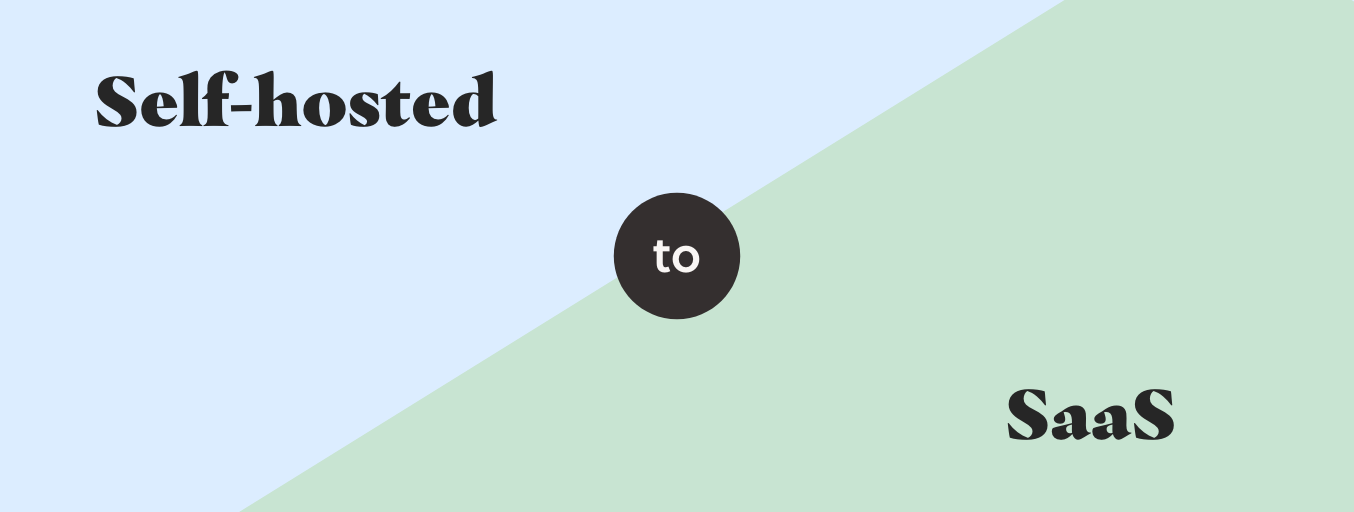The second type of migrations brings bigger, more established enterprise brands to us, who wonder what their Total Cost of Ownership (TCO) would look like with a SaaS solution like Shopify. Their contract with their current platform is about to expire, they want to make their tech stack more flexible, or the version they use has reached its End Of Life, and they strategically decide to check out the alternatives. A migration is an even bigger and more complex undertaking for them than it is for smaller brands, so there usually is a clear incentive: cost is often a major factor, but we hear a variety of other reasons too.
→ … why Mastertools traded its monolith for a scalable tech stack
→ … why Kabrita switched from WooCommmerce to Shopify to scale internationally
15 signs it’s time to move to SaaS
Below you will find a list of pain points of self-hosted platforms, which are most often reported to us by replatforming clients. If you recognize any of these situations and sentiments, you’re definitely on the wrong side of self-hosted, open-source solutions, and we highly recommend you to consider migrating to SaaS.
- “How did we become an IT business instead of an e-com business?”
Your team spends way too much time and energy on maintaining the platform, and not enough on moving your business forward. - “Everything takes forever”
You often feel frustrated with your platform. Why does every little thing have to take so long? Why can’t it ever be simple and easy? - “I can’t do anything without devs”
You need specialized developers for every little thing, even when you have your own IT people. You have to wait for them to make time for you. You sometimes even miss the boat because of that. You see their invoices drain your budget. - “Development swallows up half of my budget”
You get slightly alarming invoices from your development agency, with items on them that cost a lot but didn’t bring in any extra revenue. Like critical security updates. Or updating your platform to version 2.1.5.4. Or hours spent on problems you didn’t know you had. - “Hosting eats up the other half of your budget”
Your hosting costs take up a significant portion of your budget, because your platform is so heavy it needs a special set-up. And still, you are experiencing downtime every once in a while. - “What are all these buttons for?”
Your platform feels bloated with functionality that you never use. Your employees have trouble seeing the forest for all the trees. You still pay for hosting and maintaining it all. - “Where the &%#^ can I change this $%*$-ing thing?!”
You hear your employees complain a lot. User-friendliness? Only if you’re a seasoned developer. - “What do you mean, our checkout doesn’t work?”
Customers reach out to your customer support team with technical problems (and those are only the ones who contact you, imagine how many simply left your site). - “Oh, there goes my weekend again…”
You see your traffic drop and instantly have that sinking feeling: you just know that something is up with your platform (again). - “Sale? No sleep guaranteed”
You feel your online store is in constant risk of crashes and downtime, especially when traffic spikes. You have to ‘pat the server’ at busy, lucrative times like BFCM, and hope it will stay in the air long enough to get you the 30% of your yearly revenue you aim to rake in (if your platform plays its part for once). You watch it crash anyway, despite all your efforts. - “Adding new features feels like a game of Jenga”
Adding new features should be exciting but now it’s something you very much like to avoid. You don’t dare touch anything, add a new app, or a payment method, or change any code, because the site feels like a house of cards that can come crashing down anytime. - “I am forced to ‘get creative'”
You really, really need to add some crucial new feature and you have to conclude that it cannot be done with your platform. You think up an unstable patch or a labor-intensive workaround to get the platform to do it anyway. You walk on eggshells as a result. - “But we only just recovered from the last update?”
You dread the next platform update, fearing the consequences for your store. And your budget. And your planning. You’d rather not do the update at all if you can get away with it. - “It feels like the end of life..”
You are forced to migrate to a new version of your Magento or Shopware platform because the version you’re still using is heading towards its End Of Life (EOL). The new version is completely different so you practically need to reacquaint yourself with the platform from scratch. Since all users of the platform have to migrate, your developer agency puts you on a waiting list. - “It feels like my competition is moving at a much faster pace”
You watch your business stagnate, stuck in a grind of EOL’s and updates, while competitors on SaaS / Shopify thrive and take great leaps forward - and they make it look easy. You feel your platform is becoming an anachronism and that your business runs the same risk if you don’t leave the sinking ship asap.
Why migrating brands choose Shopify
The migration trend is not all about self-hosted platforms causing problems, however. It’s not only a move away from self-hosted, it’s also a move towards Shopify. Because, as Harley Finkelstein put it at this year’s Shopify Enterprise Summit: “Not being on Shopify is a competitive disadvantage.”
A major reason why brands are taking the leap to Shopify is because Shopify has been making great leaps itself over the past few years. It now offers a lot more value than competitors like Magento and Shopware (not the least of which is Shopify’s best-in-class checkout), and is a lot easier to use. It also doesn’t crash as often: Shopify’s fast and secure cloud hosting infrastructure gives users access anywhere and guarantees 99.99% uptime.
“We now have an efficient, interconnected landscape of systems: Gorgias, Klaviyo, Exact, our fulfilment partner Montapacking are all integrated with Shopify Plus.” - Teun van Leijsen Founder Stoov
What is more, its Total Cost of Ownership makes migrating to Shopify a lucrative decision. Even with the cost of a platform migration, in the long term, Shopify is less expensive than most of its self-hosted competitors and offers a lot more value for money.
→ Read our blog and use our support to calculate the TCO of your webshop on Shopify
New wave of enterprise brands choosing Shopify
At Code, we see a third migration reason in the changed needs of enterprise brands.
Established brands like Trimtex and O’Neill leave their Salesforce Commerce Cloud setup in favour of a leaner and more flexible solution so they can mix and match solutions and rearrange functionality as they see fit.
At the same time, Shopify has been optimizing its enterprise offers to match this preference: in addition to Shopify Plus, large enterprise brands can now turn to options such as Headless Shopify with Hydrogen and Commerce Components to ensure maximal agility in a fast-paced e-commerce landscape.
Are you considering a migration to SaaS as well, and would you like to know what Code can do for you? Check out our previous work, download our Migration Guide or get in touch.



